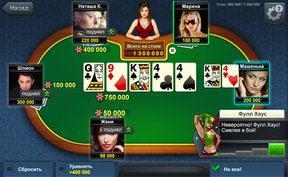Quick Online Poker Tips
Card Player Magazine, available in print and online, covers poker strategy, poker news, online and casino poker, and poker legislation. Sign up today for a digital subscription to access more than 800 magazine issues and get 26 new issues per year!
To thrive in the modern online poker climate you need to stay up-to-date with current trends and pay attention to bet sizing, position and dynamic hand ranges. If you’re interested in learning more about poker strategy, have a look here at this resource by About.com. Comments are closed. If this is your first time playing online poker, get started at the bottom, then move your way up from there. For that matter, if you’re already playing at Bovada Poker and you feel like you’re in over your head, move down in stakes. In fact, try starting at the lowest stakes there are.
One of my students recently played a hand at a $550 buy-in live tournament that illustrates an exploitative play you can make against many players in small-stakes poker games.

- 10 Quick Poker Strategy Tips That Will Help Your Game. 10 Quick Poker Strategy Tips. You can click any of these poker tips to jump straight to a detailed explanation that will help your game. Tip #1: Play Fewer Hands And Play Them Aggressively. Tip #2: Don’t Be The First Player To Limp.
- 10 Quick Poker Strategy Tips Online Poker University Big Stack by Mansi Gupta Posted on December 4, 2019 January 22, 2020 Becoming a crackerjack of poker is vital when you’re serious and planning to make a good career out of it.
- Video poker offers an opportunity to play in the casino with a high return to player percentage. In fact, some video poker games have the best return in the.
With a 55,000 effective stack and blinds at 500-1,000 with a 1,000 big blind ante, our Hero raised with J J from first position to 2,500. Everyone folded to the cutoff, a loose, passive player, who three-bet to 8,500.
At this point, Hero can be fairly certain his opponent has a premium hand, probably 10-10+ and A-Q+, because most passive players tend to three-bet with only their best hands and call with their non-premium hands. Given the opponent’s range is quite strong, Hero should not four-bet with J-J, because he will only get action when he is crushed by a better pair or flipping against A-K. Calling from out of position will lead to some difficult post-flop situations, but it is the best course of action given the opponent’s strong range.
Hero called and the flop came 10 8 2. Hero checked and his opponent bet 7,000 into the 19,500 pot.
Although Hero now loses to all of the opponent’s likely pocket pairs, he still beats A-K and A-Q. Given most players will continuation bet this flop with their entire range, Hero should call and see what develops on the turn.
The turn was the 4. Hero checked and the opponent checked behind, likely indicating an unpaired hand, probably A-K or A-Q. The river was the 3.
If the opponent’s range is mostly A-K and A-Q, he will usually check behind on the river, awarding Hero the small pot. Instead of happily collecting the small pot though, Hero should make a bet that can realistically get called by ace high. In this situation, a small bet makes a lot of sense, assuming the opponent will rarely (or never) raise as a bluff, which will usually be the case in most small-stakes games.
Betting small also has the added benefit of saving money when the opponent happens to have a cautiously-played overpair because Hero would have otherwise check-called a larger river bet.
Hero bet 4,500 into the 33,500 pot. The opponent thought for a while and eventually called with A K, giving Hero a nice pot.
While Hero’s 4,500 river bet worked out well, he perhaps left a few chips on the table. Since the pot was 33,500 chips, Hero probably could have bet 6,500, extracting an additional 2,000 chips.
While winning an extra two big blinds may not sound like a big deal, if you miss out on two big blinds every time you are in situations like this, it will add up to a small fortune over your lifetime as a poker player. That said, many players leave the entire river bet in their opponent’s stack, so it was a nice job by my student to extract it. ♠
Jonathan Little is a professional poker player with over $7 million in live tournament earnings, best-selling author of 15 educational poker books, and 2019 GPI Poker Personality of the Year. If you want to increase your poker skills and learn to crush the games, check out his training site PokerCoaching.com. Click here to try PokerCoaching.com for free.
Dominating the US online poker scene and becoming a threat for the likes of Phil Ivey and Daniel Negreanu is no easy task. Fortunately, if you’re looking to hone your three-betting skills and take your game to the next level, our online poker strategy guide is on hand to help.
Covering the essential skills and ideas you need to grasp in order to become a profitable grinder, our strategy tips will give you a solid foundation from which build your bankroll. As we all know, trying to build a fortress on sand is impossible, so we’ve put together a selection of concrete concepts from which to launch a successful career at the virtual felt.
US Online Poker is a Long-term Proposition
Tips For Online Poker
Starting Hand Guide

On top of digesting the theoretical concepts we’ve outlined in our main article, we also think it’s important to give you a basic guide to raising and folding pre-flop. Although our pre-flop starting hand chart is far from comprehensive, you should provide a solid base from which to build on.
Caution: this poker starting hand chart is designed to be a guide and not a strict set of rules. Only follow our recommendations if the table dynamics are favorable.
- Raise:
- A-A, K-K, A-Ks, Q-Q, A-K, J-J, A-Qs, A-Qo, or A-Js.
- Call a Raise:
- None – In general, you should only raise or raise from early position.
- Re-raise:
- A-A, K-K, A-Ks, Q-Q, A-K, J-J
- Raise:
- All early position raises + 10-10, A-J, K-Qs, K-Qo, K-Js
- Call a Raise:
- 10-10, A-10o, K-Jo, Q-Jo, K-10s, 9-9, 8-8
- Re-raise:
- A-A, K-K, A-Ks, Q-Q, A-K, J-J, A-Qs, A-Qo
- Raise:
- All early and middle position raises + A-10s, K-10s, K-Jo, Q-Js, Q-Jo, 9-9, 8-8.
- Call a Raise:
- 77, 6-6, 5-5, Q-10s, Q-10o, K-10o, J-10s, J-10o, J-9s
- Re-raise:
- A-A, K-K, A-Ks, Q-Q, A-K, J-J, A-Qs, A-Qo, A-10s
There is one online poker concept that trumps all when it comes to improving your game and that’s the ability to understand variance.
Whilst developing a technically sound strategy is crucial, all of this hard work can fall apart if you don’t understand how online poker in the US ebbs and flows. Poker involves both luck and skill, which means there will be times when things go your way and times when they won’t.
Underpinning every move you make at the poker table is a mathematical phenomenon known as variance. Technically defined as the statistical distribution of results over a period of time or, in simple terms, the swings of good and bad luck that affect your bankroll, variance will have a major effect on your game.
Every move you make at the poker table has a certain expectation (i.e. whether it will make a profit or a loss in the long run) and knowing the most profitable moves is the goal of every poker player. However, because poker involves variance it’s possible that the right move won’t always yield the right result.

For example, it’s always a good idea to move all-in pre-flop with pocket aces. However, despite aces being a favorite over any hand pre-flop, it could be the case that such a move would lose 10 all-ins in a row.
Does this mean that it’s wrong to move all-in with pocket aces? No. All this simply means is that, in the short-term, your hand lost. However, over the course of, say, 1,000 hands you would be in profit. This is the nature of variance and something that all professional online poker players in the US will understand. In fact, focusing on the long-term EV of each move you make is the best way to ensure you always make the correct decision.
Go Against the Grain
General online poker theory dictates that playing aggressively is a winning strategy. However, when you’re at a table of equally aggressive players, this can actually be a losing strategy.
Quick Online Poker Tips 1x2

Over the last few years the skill level of the average American online poker player has increased dramatically and it’s now likely you’ll find at least one or two other players who know it’s correct to play aggressively.
In situations like this it’s important to identify these players as quickly as possible and ascertain their position they are in relation to you.
“Identifying the tendency of the table as a whole is crucial when you’re trying to make money.”
For example, if the aggressive players are to your right you should allow them to make moves and only re-raise when you have a strong hand. Conversely, if the aggressive players are to you left, you should be much more wary of making raises because they are more likely to 3-bet you.
Moreover, identifying the tendency of the table as a whole is crucial when you’re trying to make money. While conventional wisdom states that it’s best to be aggressive, it can be very tough to do this when everyone else is doing the same thing.
Thus, the smartest strategy in this situation (and all situations at the poker table) is to do the opposite of what everyone else is doing. While adopting this mentality requires you to be a more observant player, the payoff is that you’ll not only become tougher to beat but a more profitable player.
Beating the Modern Game
Back in the days when online poker in the US was an evolving beast, the average player was incredibly tight and usually only made bets with strong hands.
During this time competent players realized that the best way to exploit these players was to be as aggressive as possible.
However, as the game has progressed, this strategy became well-known to the point where most players were confident enough to play aggressively themselves. To counter this trend, it’s now the case that modern online poker players are taking a more conservative approach when it comes to bet sizing.
“Modern online poker players are taking a more conservative approach when it comes to bet sizing.”
For example, most American poker players will now raise 2X or 2.2X the big blind pre-flop and will often only open with the top of their range (i.e. their best hands) from early position. However, a few years ago it was the case that a standard opening raise would be 3X the big blind and strong players would often raise with their top and middle of their range (e.g. hands such as medium pairs and suited connectors).
Poker is a fluid game that evolves over time and to become a winning player you need to understand this fact. Becoming a winning player is one thing, but maintaining this status is extremely difficult if you don’t continue to improve. To thrive in the modern online poker climate you need to stay up-to-date with current trends and pay attention to bet sizing, position and dynamic hand ranges.
If you’re interested in learning more about poker strategy, have a look here at this resource by About.com
Tips For Playing Poker
Related Pages:
Comments are closed.